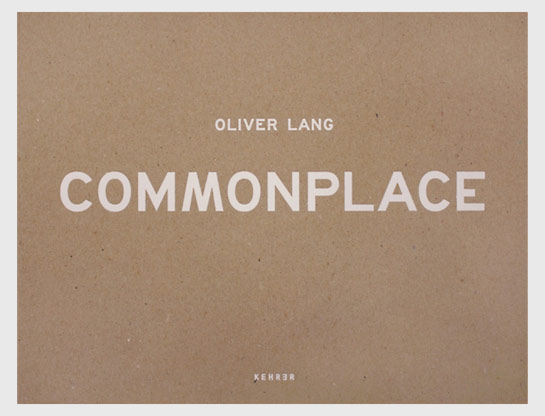Review: Commonplace by Oliver Lang

The things you see when traveling abroad can be rather strange, and often it takes a visitor (or a child) to point a finger and something to make us look. It’s also strange how sometimes things we take for granted, things we’d never expect to change, implode, collapse or disappear. Occasionally, all of this is even connected, as was the case when the last financial bubble burst, to destroy both companies such as Lehman Brothers as well as the homes of many who had financed them in ways that simply didn’t make any sense. The consequences of the implosion of the US housing market are still with us, years later, and one would imagine that such a huge event - just short of another Great Depression - would result in some changes. It has not. The financial sector has got away with proverbially burning down the house and literally getting thousands and thousands of people evicted out of their homes. Many houses are now empty, either never sold, or because their owners lost them. (more)
So Oliver Lang’s Commonplace is published at a curious moment in time. It is not just that viewers in North America will be very familiar with the life style that resulted in the construction of these anonymous, uniform suburban houses and mansions. It’s also a life style that has become an incredibly threatened species, even many people still refuse to face that fact. Not only has the financial foundation of large parts of these developments been destroyed, their reliance on transportation - you can’t live there without owning at least one car - has also been making them more and more problematic (a topic that always flares up when gas prices are high).
These developments add relevance to Commonplace, a book that, I suspect, Europeans will look at with different eyes than North Americans. I imagine that both sides would probably agree on the fact that the places depicted in the book are mind-numbingly boring. Seeing page after page after page of those rows of houses really brings home that point. But in another way, it’s also a history book of sorts. This style of life is history, unfolding - very slowly - right now. It’s not the first book to portray those kinds of housing tracts - there are countless book - but probably the first book to do so just after the whole endeavour had its foundation destroyed. Commonplace is depicting its last hurrah.
The book is laid out in a slightly unusual way, and I’m a bit torn about that. The images are presented as full-bleed pages, with the essay dispersed in between (using a different paper stock). What is more, the text is printed side-ways. This makes for a bit uncomfortable reading - you either have to turn the whole book by 90 degrees and then ignore the images, or you have to constantly turn your head back and forth. But maybe this is what you need, because looking at all these photographs of what more or less looks like the same house over and over and over again might make one’s brain freeze up.
Commonplace, photography by Oliver Lang, essay by Tan Wälchli, 88 pages, Kehrer, 2001